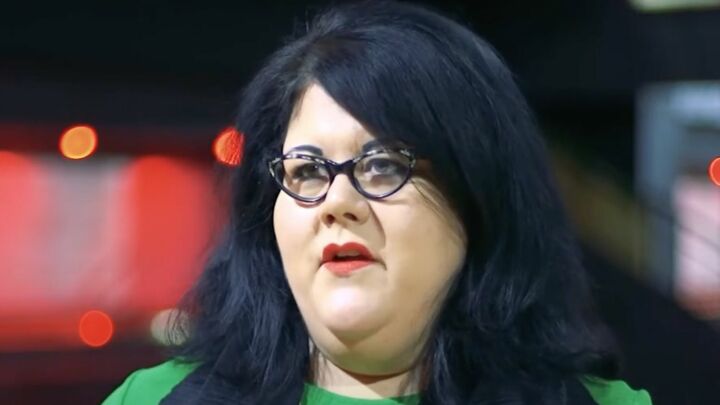Thought-Proof Fence
A Sydney writer on why Australians have applauded a new film about the 'Stolen Generations' of Aboriginal children - even though the film sucks.

Want to read spiked ad-free? Become a spiked supporter.
The facts of the ‘Stolen Generations’, the countless thousands of Australian Aboriginal children taken permanently from their mothers and placed in remote, state-controlled ‘re-education’ camps, have been suppressed by successive Australian governments, absent from school curricula, and glaringly glossed over in Australian state celebrations, such as the Opening Ceremony of the Sydney 2000 Olympic Games.
So in one way, it’s great that this under-reported chapter of history has been made into a film – Rabbit-Proof Fence – and won a wide commercial release. As a film, starring (among others) the British actor Kenneth Branagh, the story has the potential to find a huge international audience. Millions of people may see the film, hear about it in entertainment columns or TV shows, and discover its subject matter for the first time.
Problem: The film sucks. It uses a hackneyed, conventional narrative, a contrived approach to character, some very bad dialogue, and some acting that is worse.
So why has Rabbit-Proof Fence been acclaimed as a popular masterpiece in Australia, with almost every major critic giving it their top rating, and audiences attending in droves?
Partly, I suspect because it’s too easy for white Australians like myself to make this film into a sacrificial altar for their colonial guilt. ‘Oh yes’, we can say after seeing it, ‘I can’t believe it really happened, how heartbreaking, and to think we were never even taught about it’. This allows me to show my empathy for the unimaginable suffering of the ‘Stolen Generations’, while simultaneously filing it away under a time long gone by. Attending the film is a socio-political statement.
With a film like this, the lines between importance of subject matter and quality of film become blurred, combined. As Martin Scorsese discovered with The Last Temptation of Christ, filming a controversial, touchy subject can blank out whatever you end up doing with the film itself. Rabbit-Proof Fence director Phillip Noyce has experienced the same, in reverse – critical praise and high box office, proclaiming this very average film as a great piece of cinema that the public love. Really, what people are saying is ‘we want to see more about this subject’, and are offering their unbridled encouragement.
This is great, and I agree that there should be far more films, novels, theatre pieces, that expand indigenous participation in Caucasian cultures. The trouble is that a kind of cultural dictatorship creeps in.
Criticising the film opens one up to accusations of racism, anti-patriotism and redneck ignorance. When I told a friend that I didn’t really like this film, she gruffly replied ‘Well, yes, some people find it hard to watch’. She meant, too confronting; I had meant, I found it boring. Like Schindler’s List and Dances With Wolves before it, the flaws of this plain, melodramatic film are hidden under its cloak of self-importance. It sneaks all the way up to awards night podiums using its subject matter like a mirror, deflecting any critical view of its blatant shortcomings.
Noyce editorialises too much. Maybe he’s overcompensating for what he was never taught at school (he was raised in Australia), but he treats the audience like kindergarten pupils. I remember seeing the trailer for the film and hearing Kenneth Branagh mutter dialogue to the effect of ‘if only these people [the Aboriginals] would understand what we were trying to do for them’. I was waiting to hear him say it, expecting it to come somewhere near the end. But no, it came very early, in one of his first scenes.
Then, in the film’s second act, he paraphrased it, seeming to become frustrated at the Aboriginal ‘resistance’. He said it one more time before the film was finished. Each time he says it, Noyce holds the shot for a few extra seconds, focused on Branagh’s cold and emotionless face. Maybe it was the period setting, but during these pauses I kept waiting for a sign saying ‘BOO!!’ to pop up, and as the film progressed, I wondered why Noyce hadn’t gone all the way with Phantom Of The Opera-style musical dirges every time Branagh appeared on screen.
Branagh plays Mr Neville. The Aboriginal children mispronounce it as ‘Devil’, meaning he is referred to as ‘the Devil’ or ‘the Devil Man’ for much of the film. At one point, he gives a slide show to local women outlining how the Aboriginal race can effectively be ‘bred out’ of existence. At another, he lifts the shirt-tails of Aboriginal children, declaring them too black to be formally educated. Noyce’s camera zooms in on Branagh’s unblinking expression when he rejects a child by calmly, coolly saying ‘no’.
This kind of Darth Vader versus Luke Skywalker cinematic morality is dated, and dumb. Did Noyce and Baz Luhrmann go to the same Sydney film school?
Noyce passes on the story’s human complexities, and concentrates instead on the sensational emotions that surround it. Of course it was terrible. Of course it was unjustifiable, inexcusable. Of course it now seems like human theft, slavery. But why paint the white Australians/English colonials with such broad, stock strokes? We know how horrible it was, but surely we want to know why it was, and who was involved, and whether any of them had misgivings, second thoughts, or a moral reaction at all.
Were only the most ardent eugenicists sent from England to Australia? Why did European Empires systematically destabilise every indigenous culture they came into contact with? Why have the facts of the ‘Stolen Generations’ been kept from Australians for so many decades? Who kept records? Who signed papers? Should they be called to account, posthumously?
No worthwhile answer to any of these questions is going to come out of a film like this, and audiences and critics should be ashamed of themselves for snapping up some quick take-away virtue.
Mark Adnum is a Sydney-based writer.
Rabbit-Proof Fence is now showing in Australia, and is released in the USA on 21 June 2002. See the official website.
Read on:
spiked-issue: Film
Celebrate 25 years of spiked!
A media ecosystem dominated by a handful of billionaire owners, bad actors spreading disinformation online and the rich and powerful trying to stop us publishing stories. But we have you on our side. help to fund our journalism and those who choose All-access digital enjoy exclusive extras:
- Unlimited articles in our app and ad-free reading on all devices
- Exclusive newsletter and far fewer asks for support
- Full access to the Guardian Feast app
If you can, please support us on a monthly basis and make a big impact in support of open, independent journalism. Thank you.






Comments
Want to join the conversation?
Only spiked supporters and patrons, who donate regularly to us, can comment on our articles.